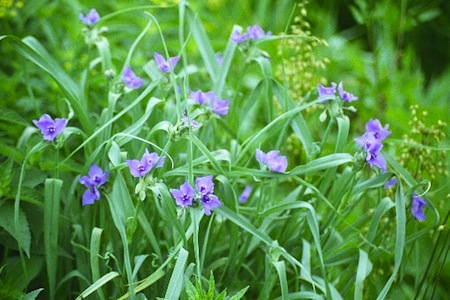GardeningTip #7: Watch Out for Invasive Varieties
Some plants "play nicely" with others in a garden setting, minding their own business and not getting in other plants' way. They stay where they are planted and don't cause any trouble. An invasive plant, when talking about gardens, is any plant that doesn't like to play by the rules, and rapidly spreads throughout the garden.Invasive ??
Many starting gardeners enthusiastically plant flowers and vegetables in the spring, nurture them all summer, then cut or pull them down at the end of the growing season.
Unfortunately, some invasive plants don't get the hint that their job is finished. An example of this is a horseradish plant. After a successful growing season, the plants can be pulled, the garden soil tilled....and next spring, brand new horseradish plants are popping up everywhere! This is an example of a garden invasive plant.
Dealing with Invasive Plants
There are many plant varieties that are notoriously invasive and aggressive growers. As a gardener wishing to keep these types of plants from overtaking your garden, your best bet is to know which varities cause trouble, and avoid them. Plants such as the aforementioned horseradish, and others such as Mexican feathergrass, spiderwort, and English ivy are incredibly invasive; they will take root in a garden area and spread quickly .
If you want to grow a known invasive variety, growing it in a container where it is isolated and easily maintained i a good idea. With time, the personal experience you have with different plants and their growing habits will teach you what plants like to spread vigorously, and which tend to stay in place.
Another way to deal with invasive plant varities if you already have them in your garden or are interested in growing them despite the risks, diligent weeding and upkeep will be necessary to keep the aggressive plants from spreading. Solarizing is another technique that helps keep them under control.
Before the growing season, dampen the soil in the area you want to control, then stretch a black plastic tarp over the area. Secure it with heavy rocks or other heavy items to keep it in place. Then, let mother nature do the work. Leaving the tarp in place (usually for a few months) as the weather warms up has a 'sanitizing' effect on the soil, effectively killing off any unwanted weeds or invasive plant varieties left over from the previous growing season. It's cheap, it's chemical free, and it works.
Identifying Invasive Varieties
The best way to deal with invasive or aggressive plant varieities is to simply stay away from them. That can sometimes be easier said than done. How to identify these bullies of the plant world?
Read between the lines of seed packages. There are certain key words that will often let you know that the plant is a known invasive variety. Phrases like 'vigorous growth' and ' prolific reseeder' usually mean that the plant isn't going to sit still; it's going to want to spread like crazy, even uncontrollably.
However you choose to deal with invasive or aggressive plants in your garden is ultimately up to you; your garden is your own personal canvas; some people don't mind letting a plant variety go wild in a garden. Others prefer the neat, tidy rows of a well-kept, well-behaved garden.
comments powered by Disqus




































































